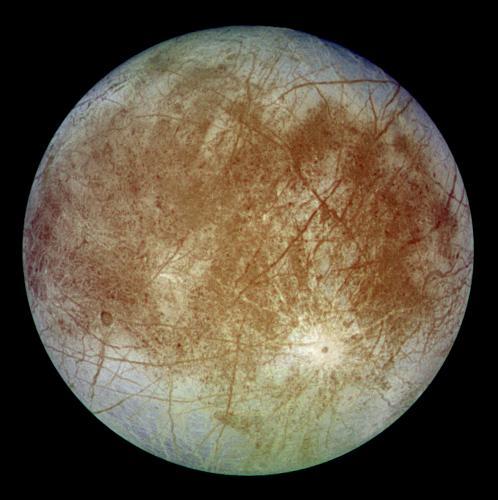Moon or neutrino detector? Maybe both. An astrophysicist proposes to use Jupiter's moon Europa as an energetic neutrino particle detector.

Direct address to this page:
https://www.hayadan.org.il/europadetector.html
An astrophysicist from the United States suggests using one of Jupiter's moons to discover energetic particles such as neutrinos. Peter Gorham of the University of Hawaii says that we would need detectors of this magnitude to detect particles with energies as high as ten to the power of twenty-one electron volts (arXiv.org/abs/astro-ph/0411510).
Neutrinos with lower energy than the Sun have long been detected in several experiments on Earth. However, energetic neutrinos from cosmic sources are much rarer, so huge detectors are needed to see them.
Neutrinos interact very weakly with matter, a fact that is both an advantage and a disadvantage in astrophysics. On the one hand, the neutrinos are able to travel vast distances in the universe through different materials without losing the information they carry about their source. On the other hand, their little interaction with the material makes it very difficult to discover them.
When neutrinos move through large blocks of ice they create flashes of Cerenkov radiation by interacting with protons and neutrons in the ice. These flashes can be measured and from them learn about the neutrino and its origin. One detector of this type, called AMANDA, has been operating for a long time in Antarctica, and is capable of detecting neutrinos at energies up to ten to the power of five electron volts. Future detectors, including IceCube and ANITA, will be able to detect neutrinos with energies up to ten to the eighteen electron volts.
Graham raises the possibility of using large ice deposits in the solar system in order to discover neutrinos with higher energies, up to ten to the power of twenty-one electron volts. The flashes caused by the neutrinos will be able to be measured with the help of a spacecraft that will attack the sky gram in question.
"The best candidate, at the moment, is Europa, one of Jupiter's moons, because it is likely surrounded by a thick shell of ice larger than the ice masses on Earth," Graham told Physicsweb. "And more importantly, the temperature of the ice in Europe was about 90 degrees Kelvin, which means that the thermal noise there is much lower than that of the ice in the South Pole, whose temperature is about 240 degrees Kelvin."
Translation: Dikla Oren
